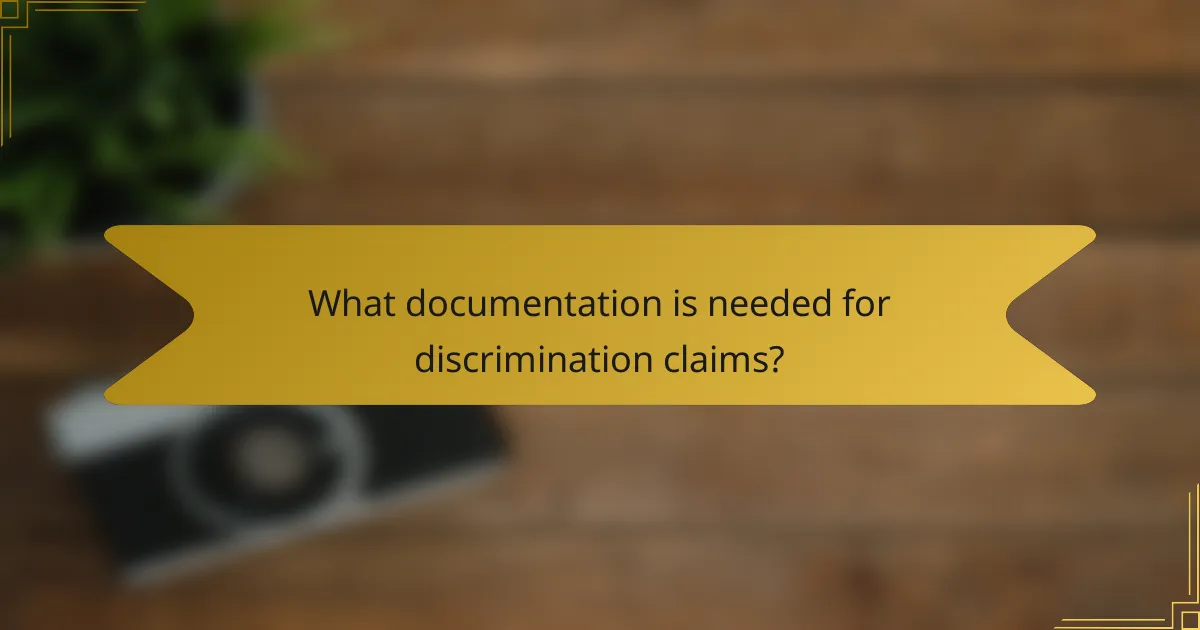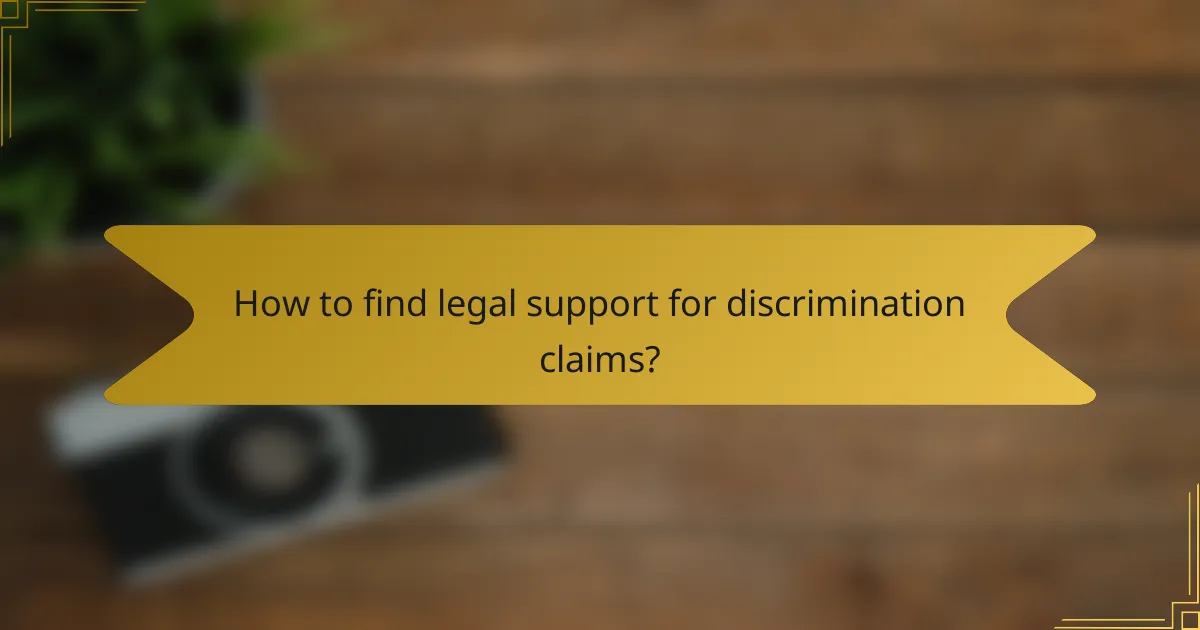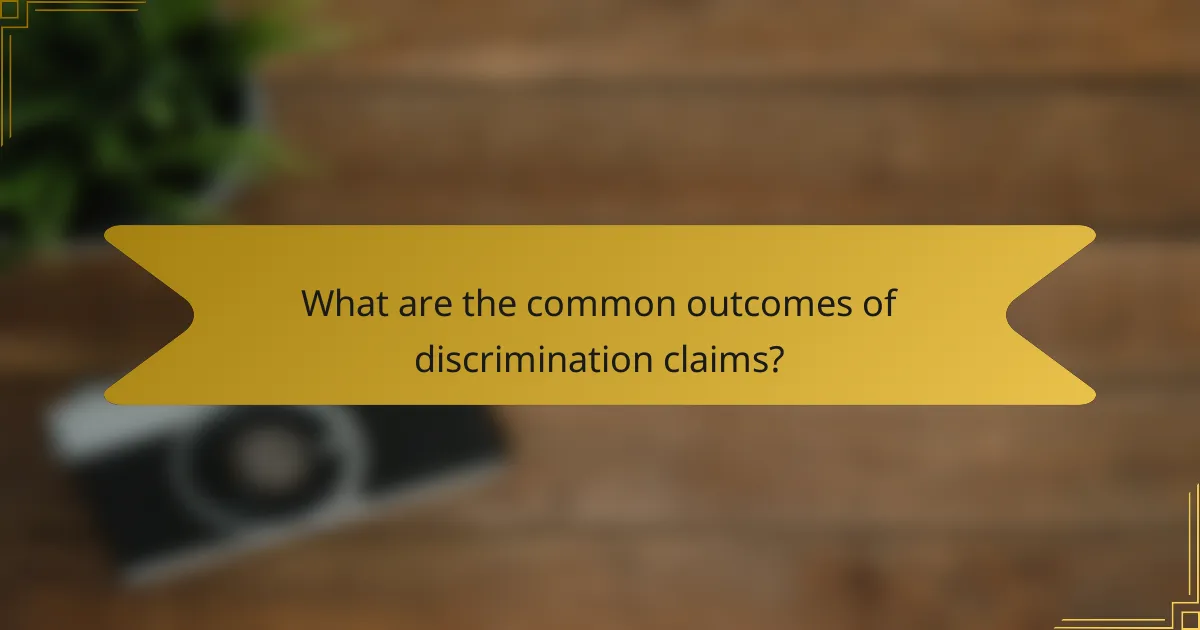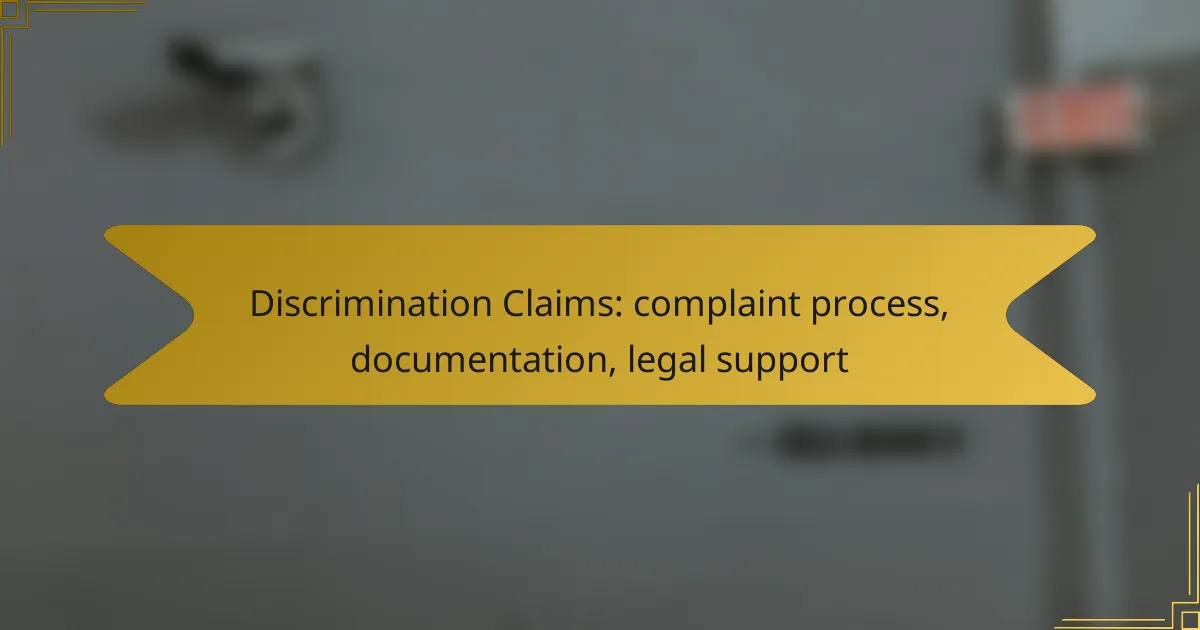Navigating the complaint process for discrimination claims is crucial for protecting your rights and ensuring that your concerns are addressed appropriately. This process typically begins with reporting the issue to your employer and may escalate to an employment tribunal if necessary. To strengthen your claim, it’s important to gather relevant documentation, such as evidence of incidents and witness statements. Additionally, seeking legal support from qualified professionals can provide you with the guidance needed to effectively pursue your case.

What is the complaint process for discrimination claims in the UK?
The complaint process for discrimination claims in the UK involves several key steps, starting with reporting the issue to your employer and potentially escalating to an employment tribunal if necessary. Understanding this process helps ensure that your rights are protected and that you follow the appropriate legal channels.
Initial reporting to the employer
The first step in addressing a discrimination claim is to report the issue to your employer. This should be done as soon as possible, ideally in writing, to create a formal record of your complaint. Employers are required to have a grievance procedure in place to handle such reports.
When reporting, include specific details about the discrimination experienced, such as dates, times, and any witnesses. This documentation will be crucial if the issue escalates.
Filing a claim with an employment tribunal
If the issue is not resolved internally, you can file a claim with an employment tribunal. This involves completing a claim form and submitting it to the tribunal service. Be aware that there are specific forms for discrimination claims, and you will need to provide evidence to support your case.
It is advisable to seek legal advice before filing, as the tribunal process can be complex and having professional guidance can improve your chances of a favorable outcome.
Time limits for filing claims
In the UK, there are strict time limits for filing discrimination claims. Generally, you must submit your claim to the tribunal within three months of the discriminatory act. This period can be extended in certain circumstances, but it is crucial to act promptly.
Keep in mind that before filing a claim, you may need to go through an early conciliation process with ACAS, which can take up to a month. This means you should start the process as soon as possible to avoid missing deadlines.
Steps to escalate complaints
If your employer does not address your complaint satisfactorily, you can escalate the matter by following their grievance procedure. This may involve a formal meeting or further written communication outlining your concerns.
If internal resolution fails, you can then proceed to file a claim with an employment tribunal. Ensure that you keep detailed records of all communications and actions taken throughout the process, as this will support your case if it escalates to legal proceedings.

What documentation is needed for discrimination claims?
To support a discrimination claim, you need various types of documentation that demonstrate the incidents and their impact. Key documents include evidence of discrimination incidents, witness statements, employment records, and correspondence with your employer.
Evidence of discrimination incidents
Evidence of discrimination incidents can include photographs, emails, text messages, or any other tangible proof that illustrates the discriminatory behavior. For example, if you experienced harassment, screenshots of messages or recordings of conversations can be crucial.
Keep a detailed record of dates, times, locations, and descriptions of incidents. This information helps establish a timeline and context for your claim, which is vital for legal proceedings.
Witness statements
Witness statements from colleagues or others who observed the discriminatory behavior can significantly strengthen your case. These statements should detail what the witness saw or heard and how it relates to your claim.
Encourage witnesses to write their accounts as soon as possible after the incident to ensure accuracy. Having multiple corroborating statements can provide a clearer picture of the discrimination you faced.
Employment records
Your employment records, including performance reviews, disciplinary actions, and promotion history, can help establish a pattern of discrimination. If you were treated differently than others in similar positions, these documents can highlight disparities.
Gather any relevant HR documents that may indicate how your employer handled complaints or incidents related to discrimination. This information can be pivotal in demonstrating a lack of appropriate response from your employer.
Correspondence with the employer
Any correspondence between you and your employer regarding the discrimination should be collected. This includes emails, letters, or notes from meetings where you discussed your concerns.
Documenting your attempts to address the issue internally can show that you followed proper channels before escalating the matter legally. This can also reveal the employer’s response or lack thereof, which is important for your claim.

How to find legal support for discrimination claims?
Finding legal support for discrimination claims involves identifying qualified professionals who specialize in this area of law. It’s essential to explore various resources, including solicitors, legal aid options, and advocacy groups, to ensure you receive the appropriate assistance.
Solicitors specializing in discrimination law
Solicitors who focus on discrimination law can provide tailored legal advice and representation. Look for professionals with experience in handling cases similar to yours, as they will be familiar with relevant laws and procedures.
When searching for a solicitor, consider their track record, client reviews, and whether they offer a free initial consultation. This can help you gauge their suitability for your case without incurring upfront costs.
Legal aid options available
Legal aid can help cover the costs of legal representation for those who qualify based on income and circumstances. In many countries, legal aid services are available for discrimination claims, but eligibility criteria vary widely.
To access legal aid, you typically need to apply through a designated agency or organization. Be prepared to provide documentation of your financial situation and details about your discrimination claim.
Support from advocacy groups
Advocacy groups play a crucial role in supporting individuals facing discrimination. These organizations often provide resources, legal guidance, and sometimes even direct legal assistance to help you navigate your claim.
Many advocacy groups focus on specific types of discrimination, such as race, gender, or disability. Research local organizations that align with your situation, as they can offer valuable insights and connections to legal professionals.

What are the common outcomes of discrimination claims?
Common outcomes of discrimination claims often include financial compensation, reinstatement or promotion, and changes to workplace policies. Each outcome aims to address the harm caused by discrimination and prevent future occurrences.
Compensation for damages
Compensation for damages is a frequent result of discrimination claims, intended to cover losses suffered by the victim. This can include lost wages, medical expenses, and emotional distress. Depending on the severity of the case, compensation can range from a few thousand to potentially millions of dollars.
Victims should document all financial losses and emotional impacts to strengthen their claims. Legal support can help navigate the complexities of calculating appropriate compensation amounts.
Reinstatement or promotion
Reinstatement or promotion is another possible outcome, particularly if the discrimination led to wrongful termination or denial of advancement opportunities. Employers may be required to reinstate the employee to their previous position or provide a promotion that was unjustly denied.
This outcome emphasizes the importance of maintaining a fair workplace and can serve as a corrective measure. Employees should be prepared to demonstrate how their qualifications align with the roles they seek to reclaim or achieve.
Policy changes in the workplace
Policy changes in the workplace often occur as a result of discrimination claims, aimed at preventing future incidents. These changes can include enhanced training programs, revised hiring practices, and clearer reporting procedures for discrimination complaints.
Employers may implement these changes to comply with legal standards and improve workplace culture. Employees can advocate for specific policy adjustments that address their experiences and promote a more inclusive environment.

What are the prerequisites for filing a discrimination claim?
To file a discrimination claim, you must demonstrate that you have experienced unfair treatment based on a protected characteristic. This often involves understanding the specific laws that apply in your jurisdiction and gathering relevant evidence to support your case.
Understanding protected characteristics
Protected characteristics typically include race, gender, age, disability, religion, and sexual orientation, among others. These categories are defined by local laws, such as the Civil Rights Act in the United States or the Equality Act in the UK.
Familiarizing yourself with the specific characteristics protected in your area is crucial. For instance, some jurisdictions may include additional categories like marital status or gender identity, which can impact your claim.
Gathering necessary documentation
Collecting documentation is essential for substantiating your discrimination claim. This may include emails, performance reviews, witness statements, and any relevant correspondence that illustrates the discriminatory behavior.
Keep a detailed record of incidents, noting dates, times, and locations, as well as the individuals involved. This information will help establish a timeline and context for your claim, making it more compelling.
Consider consulting with a legal professional to ensure you gather the right documentation and understand what is necessary for your specific situation. This can help avoid common pitfalls and strengthen your case significantly.
